-
Content count
278 -
Joined
-
Last visited
Posts posted by thamosh
-
-
Once you experience the FP sublime energy you can realize that the FP energy is energy of the one-power - heavenly qi thats closer to the frequency of the Dao than most....
But this is just my limited experience from a couple of sessions of the flying phoenix system.
Sifu Terry will probably expound on this much greater and deeper way

For some reason i think it has to go with the "quality" and "purity" of energy that FP works with...
You see often the mopai threads are silly, and with lot of spite and anger,
So for practitioners of FP system, the heavenly qi connects us more to the dao which all anger, hate, and fighting are contrary with

-
 1
1
-
-
Just in case anyone else quotes me in this thread, I'm not replying here anymore. The Mo Pai Kool aid is a bit too sugary for my taste.
Yeah its the bickering posting of nothing new and a lot of mis understandings....
Wish I saw more hardcore researchers into this topic.....
My theory is that each level you progress the LDT changes and it can absorb energy twice as fast as it previously could. This is why each level is a double of power. You can absorb energy twice as fast, so you are able to cultivate twice as much energy per hour of training as you could in the previous level. Assuming this is true a person at level 20 can cultivate energy 131,072 times faster than someone at level 3 could. If John drained his energy it wouldn't take near as long to get it back as it took to get it in the first place.
Ok explain this to me because this makes no sense at all....I mean isn't the ldt full at level 1 and then packed with more energy at level 2a?
-
Bodhidharma (Tamo in Chinese, Daruma in Japanese) was an Indian prince credited with bringing Chan (Zen in Japanese) Buddhism to China. While many scholars doubt his existence, others believe that he was born in Southern India, circa 440-470 A.D. As the son of a king, he was given instruction in the martial arts, most likely Vajramushti. Vajramushti is a martial art that focuses on grappling and striking, and is translated as "Thunderbolt Fist" or "Diamond Fist." Although Vajramushti was indigenous to India, there was a merging of this art with Pankration, a "no rules" match of striking and wrestling introduced in 648 B.C at the 33rd Olympics. When Alexander The Great invaded India in 326 BC, the Greeks introduced Pankration to the Indians, who then combined elements of Pankration with their pre-existing art of Vajramushti.Bodhidharma's spiritual teacher, Prajnatara, told him to go to China to spread the teachings of Buddhism. After arriving in China circa 527 A.D., he was invited to Nanjing to speak with the Emperor Wu. The discussion with the Emperor proved fruitless and so Bodhidharma traveled north to the Shaolin Monastery in Henan Province. Legend says that Bodhidharma spent nine years in a cave near the temple, gazing at a wall. Upon arriving at the Shaolin Temple, he taught his unique method of meditation in order to cultivate the minds of the monks. Bodhidharma noticed that the monks were in poor physical condition and often fell asleep during meditation. He developed a series of 18 exercises to strengthen the mind and body, called Lo Han Shih Pa Sho, the "18 Hands of Lohan." Many consider these exercises as the foundation of kung fu, the popular name given to Chinese martial arts. These movements were supposedly derived from the combat art of Vajramushti, as this was the art studied by Bodhidharma in his youth. Although the "18 Hands of Lohan" may have contained fighting movements, its initial purpose was for the cultivation of chi. Bodhidharma is said to have left behind two works, the Yi Jin Jing ("Muscle Tendon Change Classic") and Xi Sui Jing ("Marrow Purification Classic"), as manuals on chi gung (breath skill). Chi gung consists of breathing exercises used to cultivate one's inner energy.The tale above is probably the most common annotation on the origins of popular Asian martial arts such as karate and kung fu. Unfortunately, the story lends itself more to fantasy than fact. Both the acknowledgment of Bodhidharma as the founder of Shaolin kung fu and the authenticity of the Yi Jin Jing itself have been questioned by historians. Scholars consider the Yi Jin Jing to be riddled with errors. Its authors and sources cannot be validated. There is also evidence of martial arts being developed in China long before Bodhidharma ever began his pilgrimage. Hui Guang and Seng Chou were Shaolin monks, both experts in the martial arts, years before the arrival of Bodhidharma. It is unknown exactly why martial arts became so prolific at Shaolin. Yet the temple continued to attract warriors already skilled in martial arts who would study with the monks and eventually expand the forms into fighting applications.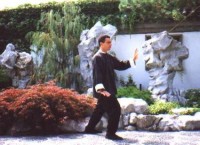
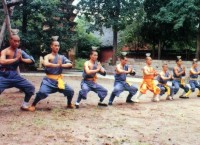
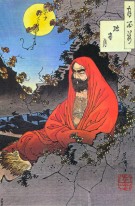 By the tenth century, Emperor T'ai Tsu, a serious martial arts adept, further developed the 18 Hands into 32 exercises of Long Boxing. In the 16th century, Chueh Yuan, a skilled swordsman, went to the Shaolin Temple to study their chuan fa (fist way). After mastering the Shaolin chuan fa, Chueh Yuan expanded the form further into 72 exercises. It is believed that Chueh Yuan left the temple to learn more kung fu and met two other masters, Pai Yu-Feng and Li Chieng, whereby they returned to the Shaolin Monastery for further study. More movements where added to the form, eventually finishing with 170 movements, all of which were much more combat oriented than the original 18 exercises. The 170 exercises were then divided into the five animals: tiger, leopard, snake, crane, and dragon. These five animals formed the basis of Shaolin chuan fa, more commonly known as kung fu (great skill) or wushu (martial arts).
By the tenth century, Emperor T'ai Tsu, a serious martial arts adept, further developed the 18 Hands into 32 exercises of Long Boxing. In the 16th century, Chueh Yuan, a skilled swordsman, went to the Shaolin Temple to study their chuan fa (fist way). After mastering the Shaolin chuan fa, Chueh Yuan expanded the form further into 72 exercises. It is believed that Chueh Yuan left the temple to learn more kung fu and met two other masters, Pai Yu-Feng and Li Chieng, whereby they returned to the Shaolin Monastery for further study. More movements where added to the form, eventually finishing with 170 movements, all of which were much more combat oriented than the original 18 exercises. The 170 exercises were then divided into the five animals: tiger, leopard, snake, crane, and dragon. These five animals formed the basis of Shaolin chuan fa, more commonly known as kung fu (great skill) or wushu (martial arts).So there may be a connection after all check it...
The below is quoted from here http://www.wudang-dr...chool/lineages/
Zhang Sanfeng, who himself was a student of the dragongate daoist ‘Huolong Zhen Ren’.
The plot thickens......
-
 1
1
-
-
I always thought the monkey king was pretty cool being that it took laozi Buddha and guanyin to stop him. But I found out that the story is really about immortality check it
http://innerjourneytothewest.com/english/en-alchemy.html
Taoist Alchemy
Taoist alchemy is a doctrine about the creation of the Golden Elixir or the Pill of Immortality. The aim is to reach transcendence and immortality. Taoist alchemy is divided into external and internal alchemy.
The process of internal alchemy opens the mystical gate to spiritual immortality.
-- Lao Tzu, Hua Hu Ching #61External alchemy uses a physical crucible and ingredients, while in internal alchemy, the crucible and medicinal ingredients are symbols and the creation of the elixir is metaphysical process.
 Li Tie Guai, one of the eight immortals,
Li Tie Guai, one of the eight immortals,
with the pill of immortality.Ancient immortals used the term Golden Pill (Elixir) as a metaphor of the essence of true consciousness, which is fundamentally complete and illumined. The ignorant who do not know this consider the golden elixier to be a potion made from minerals.
-- Liu Yiming (The inner teachings of Taoism - The Gold Elixir)Pills that can make you immortal are only a fiction.
Nirvana can never be won by a mind in disorder.
-- Journey to the West Ch. 46My master said that the elixir is in one's own body
It is a waste of effort to seek it outside.
-- Journey to the West Ch. 17 (Sun Wukong speaking)All esoteric traditions speak about an Elixir of Immortality, which has many other names such as Elixir of Life, Water of Life, Amrita, Ambrosia, Soma or Panacea. It refers to a method to reach the state of Divine Presence of the Higher Self or Original Spirit. When esoteric traditions no longer produce immortals or sages, the understanding of this method gets lost, and a religion develops where people perform external rituals and try do something that can only be done internally.
The inner medicine involves no doing but there's nothing it does not do.
The outer medicine involves doing and there is a way to do it.
-- Li Dao Chun (13th C. Taoist master, The book of Balance and Harmony)When the knowledge of the method of doing is no longer understood, people have no choice but to take the outer medicine as a physical substance.
Alchemy in Journey to the West
Journey to the West uses the theme of alchemy to open up the mysteries of
the Triplex Unity and Understanding Reality.
-- Liu Yiming (Commentary on Journey to the West)The triplex unity is a Taoist text written by Wei Boyang in the second century CE. Understanding Reality is Taoist text written by Zhang Boduan in the eleventh century CE. These texts speak about yin and yang, the medicines, the process of reversal and the firing process. The concept of yin and yang is one of the most basic and important concepts of Taoist alchemy.
The body of pure yang was happy in the sun.
The yin demons dared not use their might.
-- Journey to the West Ch. 99There is not only one kind of yin and yang. There is primordial yin and yang, and there is condition yin and yang. There is yin and yang within life and there's yin and yang within essence. There is real yin and yang and there is artificial yin and yang. There is external yin and yang and there is internal yin and yang. It's necessary to study all these kinds of yin and yang and understand them clearly before starting the alchemical work.
-- Liu Yiming (Commentary on Understanding Reality)The meaning of yin and yang depends on the context. Generally speaking three aspects or phases of Taoist practice are expressed in terms of yin and yang: fostering yang while repelling yin, harmonizing yin and yang and transcending yin and yang.
Fostering yang while repelling yin
The firmness of the Tao belongs to yang; this is the great.
The flexibility of the human mind belongs to yin, this is the small.
-- Liu Yiming (Commentary on Understanding Reality, part II #6)Fostering yang means nurturing the mind of Tao; repelling yin refers to diminishing the influence of the human mind. The yin demons are symbols for acquired habits of thoughts and emotions of the human mind and entanglements of things of the world that interfere with the mind of Tao. The process of diminishing yin and fostering yang is also referred to as the firing process.
The firing process spoken of in the alchemical classics and writings of the masters
is a metaphor for the order of practical spiritual work.
-- Liu Yiming (The inner teaching of Taoism - On the firing process)The sun and moon are used as symbols to illustrate the firing process.
This is not the ordinary Way: it involves seizing the very creation of Heaven and Earth,
and encroaching on the hidden workings of the sun and moon.
-- Journey to the West Ch. 2
The crescent moon symbolizes the sudden manifestation of the celestial root in people when they have attained utter stillness. This celestial root is called the mind of Tao. A furnace is a vessel in which fire is used; because the mind of Tao has a celestial light which can be used to burn away a person`s mundanity (yin energy), the mind of Tao is also represented as a furnace.
-- Liu Yiming (The inner teachings of Taoism -
The crescent moon furnace)What this crescent moon symbolizes in humans is a point of yang light shinning through the middle of extreme quiet. The point of yang light is nothing but the light of the mind of Tao.
-- Liu Yiming
(Commentary on Understanding Reality, part II #3)The light of the moon or mind of Tao is the reflected light of the sun. It is not direct sunlight, so it is not the light of the Original Spirit of Higher Self but the mind of Tao, which aims to bring back the real light of the Higher Self.
 Sun Wukong, with the Rabbit in the moon,
Sun Wukong, with the Rabbit in the moon,
Japanese Ukiyoe by YoshitoshiThe point where one yang begins to move is when the yang light of real knowledge of the mind of Tao stirs but is not yet very active: only then is a glimpse of the root of heaven revealed. At this time you should quickly set about increasing the fire, gathering yang and putting it into the furnace of evolution, gradually gathering, gradually refining, from vagueness to clarity, from one yang to complete purity of six yangs. This is also like the mid-autumn moon, exceptionally bright, shining through the universe.
-- Liu Yiming (Commentary on Understanding Reality, part II #29)When the full moon of contemplation is reached,
you will be pure.
-- Journey to the West Ch. 19I used both kinds of medicine to complete the sun and moon.
-- Journey to the West Ch. 70The firing process is represented by the waxing of the crescent moon into the full moon. During this process the human mind (yin) is dissolved, and the Original Spirit gradually comes into being. This process is presented as a six-step process, going from one yang (symbolized by the I-Ching hexagram Return) to six yangs (symbolized by the I-Ching hexagram).Heaven
 On the left the hexagram 'Return', on the right the hexagram 'Heaven" from the I-Ching.
On the left the hexagram 'Return', on the right the hexagram 'Heaven" from the I-Ching.The six stages of purification by fire …are in sequence and should never be mixed up;
only then can it produce the Golden Elixir.
-- Chao Pi Ch’en (20th c. Taoist Master)The holy man who understands the mysteries of creation inherent in end
and beginning, becomes superior to the limitations of the transitory.
For him, the meaning of time is that in it, the stages of growth
can unfold in a clear sequence. He is mindful at every moment
and uses the six stages of growth as if they were six dragons
(the image attributed to the individual lines)
on which he mounts to heaven.
-- Commentary on hexagram #1, the Creative
(The I Ching p 371, Wilhelm/Baynes edition)The first six oxherding pictures below show the symbolism of the firing process in a different way. The boy represents the mind of Tao while the bull symbolizes the human mind or lower self.
When the believer has mastered his lower self, so that it serves as a riding mount beneath him,
the deeds of his heart will shine forth upon his face.
-- Al-Jilani (12th c. Sufi) The ten oxherding pictures show the process of controlling the lower self, so that the state of Divine Presence can occur. (Tomikichiro Tokuriki)
The ten oxherding pictures show the process of controlling the lower self, so that the state of Divine Presence can occur. (Tomikichiro Tokuriki)The Four Kinds of Life and Six Paths are all explained.
-- Journey to the West Ch. 12When the boy and the ox both disappear,
The blue sky is absolutely clear.
All is as round as an autumn moon.
-- Journey to the West Ch. 20 Bodhisattva Manjusri seated on his lion
Bodhisattva Manjusri seated on his lionThe ox, and also the lion, are symbols for the lower self or human mind. In the Journey to the West, the demons, which are almost always animals, are yin and represent the human mind or the lower self.
When the spirit of heaven rules in man,
his animal nature takes its appropriate place.
-- I Ching (Richard Wilhelm translation, hexagram 11 - Peace)“Bodhisattva,” said Monkey, “he's the blue-haired lion from under your throne. The Bodhisattva said a spell and shouted, “Return to the Truth, beast. What are you waiting for?” Only then did the fiend-king return to his original form, Manjusri placed a lotus-blossom
over the monster to tame him, and sat on his back.
-- Journey to the West Ch. 29When the mind of Tao has mastered the human mind, the lower mind no longer interferes and the original spirit can come into being. Now the mind is in order and Nirvana has been won.
Pills that can make you immortal are only a fiction.
Nirvana can never be won by a mind in disorder.
-- Journey to the West Ch. 46Nirvana means blown out and refers to the lower self under control. Now there is direct sunlight and one can rest in it.
This is like the bright moon in the sky, lightening up the world to view, penetrating darkness. One can then cease to employ effort involving increase and decrease, give up doing and enter non-doing.
-- Liu Yiming (Commentary on Understanding Reality, part 1 #7)The firing process itself is yang, representing the firmness of the mind of Tao. After one has reached the purity of six yangs one enters non-doing, which is yin. This is true yin while the human mind or the yin demons are false yin.
When false yin is gone, true yin appears.
-- Liu Yiming (Commentary on Understanding Reality, part 3 #8)The moon waxing to fullness is a secret passed on by word of mouth. The medicinal substances are hard to know, and the firing process is not easy to understand. Students should hasten to find a genuine teacher.
-- Liu Yiming (Commentary on Understanding Reality, part 1 #7)-- Liu Yiming (Commentary on Understanding Reality, part 3
Harmonizing yin and yang
Harmonizing yin and yang refers to keeping yin and yang balanced, while operating the firing process. Here yin and yang have a different meaning. They refer to the male and female energy inside a person.
 Shiva, the Lord whose half Is woman , Mankot School, Western Punjab Hills, India, c.1710-20
Shiva, the Lord whose half Is woman , Mankot School, Western Punjab Hills, India, c.1710-20There are husband and wife in everybody's body,
But the ignorant are too fixed on delusions
Instead of seeking creative evolution within,
They setup alchemical foundations outside.
-- Li Dao Chun (13th C. Taoist master,
The book of Balance and Harmony)Once husband and wife are joined in bliss, the firing work continues steadily, the longer the stronger, one energy in accomplishing the work, until you arrive at pure yang, beyond the realm of the senses.
-- Liu Yiming (Commentary on Understanding Reality, part IV #5)Ying and Yang in harmony will climb the cloud tower,
Riding the phoenix to the purple palace,
And flying on the crane to magical Yingzhou.
-- Journey to the West Ch. 46When you make the male and female into a single one, so that the male will not be male, and the female will not be female ...
then will you enter the Kingdom of God.
-- Gnostic GospelsTaoist alchemy explains the male or yang energy as firm and female or yin energy as flexible. Another way to see the male energy is as the mind (of Tao) and the female energy as the heart. In Journey to the West Monkey represents the mind and Sanzang represents the heart.
The union of the mind with the heart is a union of the spiritual thoughts of the mind
with the spiritual feelings of the heart.
-- Bishop Ignatii, PhilokaliaHarmonizing or blending yin and yang can also refer to harmonizing the lower self with the Higher Self. This means the lower self is under control and doesn`t obstruct the presence of the Higher Self, so they can co-exist. In Sufism, this is expressed as the Lover being together with the Beloved. The lover is the part of the lower self that wants to be with the Higher Self, the Beloved.
The sum total of our life is every breath spent in the company of the Beloved.
-- Abu SaìdTranscending yin and yang.
Transcending yin and yang refers to immediately experiencing the Original Spirit or Higher Self without operating the firing process. Everyone experiences the spontaneous presence of their Original Spirit a few times in their life. Most people however, even if they understand the experience, don`t value it enough. To have this experience more often, one needs to practice the firing process regularly.
Q. I cannot by effort reach a state that sometimes comes accidentally.
Ouspensky: If you had not made efforts it would not have come accidentally, so it is not really accidental. The more efforts you make, the more you will have these accidental moments of self-remembering,
of understanding, of being emotional. It is all the result of effort.But by the grace of God I am what I am: and his grace which was bestowed upon me was not in vain; but I labored more abundantly than they all: yet not I, but the grace of God which was with me.
-- The Bible, 1 Corinthians 15:9-10The Taoist tradition and other traditions in the far East do not speak of grace or love, because it`s not in the essence of these cultures to express this openly. Even though the form of each esoteric tradition is the result of the culture it is in, the laws operating in relation to awakening the Higher Self are the same, regardless of culture or tradition. However, some traditions will emphasize certain laws and ideas over other ones. Middle Eastern cultures are very passionate, which is why the symbol of the Lover and the Beloved is prominent in the Sufi tradition. Eastern traditions speak in terms of sudden and gradual enlightenment. Gradual enlightenment refers to using action or a method such as the firing process, to reach enlightenment. Sudden enlightenment refers to reaching enlightenment without using a method. However, sudden enlightenment is a gift from a higher level and is not directly under one`s control. Using a method to reach the awakening of the Higher self is directly under one`s control.
There is difficulty and ease in cultivating the great medicine,
and it is known to depend on oneself as well as on heaven.
-- Zhang Boduan (Understanding Reality, part II #56)It may happen that one suddenly understands first and then gradually practices, or one may first gradually cultivate and then suddenly understand. Essence and life must be both cultivate; the work requires two stages.
-- Liu Yiming (Commentary on Understanding Reality, part V #1)-
 1
1
-
-
It is important to realize that it was very common for all people in ancient China to be martial artists, as it was a violent time with many local bandits, warlords, and foreign invaders to encounter in one's travels. This is especially relevant for Zhang in light of the Daoist tradition of traveling alone from one monastery to another to study. Also, it is very common in Daoist and Buddhist culture to keep careful records of all of the venerable masters of the teaching. Though not widely known to layperson-society, many of these exist regarding Zhang and his meditative attainment and healing abilities. (Chanxuan xianjiaobian 禪玄顯教編, the Collected Documents of Buddhism and Daoism, (Yang Pu) Jionghua ji 瓊花集, the Collection of Jade Flower, (Cao Rui) Gujin tushu jicheng 古今圖書集成, the Great Collection of Ancient and Present Books (Gujin tushu), Qingxi xiabi 清溪暇筆, the Casual Writings of the Clear Stream, (Yao Fu) Baishi huibian 稗史匯編, a Collection of Anecdotes, and (Wang Qi) Shaanxi tongzhi 陜西通志, a Cohesive History of Shaanxi (Jia Hanfu) to name a few). Several tribute poems about Zhang also exist from the 1400's AD.
The most coherent biography of Zhang San-Feng is the Dayue taihe shanzhi 大岳太和山志, or the Great Taihe Mountain History edited by Ren Ziyuan 任自垣 in 1431. There are a number of other sources that also indicate Zhang San-Feng’s existence. Huangming enming shilu 皇明恩命世錄, the Records of the Imperial Bestowed Orders by the Emperors by Zhang Yuchu 張宇初; Chanxuan xianjiaobian 禪玄顯教編, the Collected Documents of Buddhism and Daoism by Yang Pu 楊溥; Daming yitongzhi xianshi 大明一統志, the Cohesive History of the Great Ming by Li Xian 李賢 in 1461; Zhang San-Feng yiji ji 張三丰遺跡記, “the Monument of Zhang San-Feng’s Legends” in the Daoist Jintai Temple of Baoji County dated in 1462; Guizhou tujing xinzhi 貴州圖經新志, the New Annuls of Charts and Records of Guizhou; (Shen Yang) Guizhou tongzhi 貴州通志, or a Cohesive History of Guizhou in 1597 (Wang Shuxian).
This was written in 1294 AD, according to Yunshui ji 雲水集, or the Collection of Cloud and Water, which is a poem collection attributed to Zhang, San-Feng. It indicates Zhang was born in 1247, his age was 48, and he may have not yet received true transmission of the Dao. Zhang left many written works, but few have yet been translated to English. These were compiled by Li Xiyue in the Qing Dynasty into a book entitled the "Complete Works of Gentleman Zhang Sanfeng", which is preserved in the "Selections of the Daoist Canon".Yin Yang Solar
Yin Yang Representation of Solar Cycle
The official Ming History describes that Zhang San-Feng was an eccentric but highly achieved alchemist, admired by Imperials and the general populace. He was summoned by the first Ming emperor Zhu Yuanzhang 朱元章 (1328-1398) in 1391, by the third emperor Zhudi 朱棣 (1360-1424) in 1412, and by the sixth Ming emperor Zhu Qizhen 朱祁鎮 (1427-1464) for his Imperial Bronze inscription in 1459. (Zhang Tingyu) But, he never was found when summoned.Sometime during the 1300's Zhang became a fully-realized Daoist "immortal", meaning enlightened. And if we are to believe that he was the same person making appearances in these documents, he attained longevity through his qigong practice to live over 200 years. It is possible that he lived a more average lifespan until the early-to-mid 1300's, and that stories about him continued to spread for the following century. He was a monk who was deeply versed in Daoism, Confucianism, and Buddhism. In his "On the Great Dao" (Dadao Lun), he stated that these religions had the same origin and they share the tendency to develop one's moral character and "cultivate the Dao." He practiced internal martial arts at Wudang Mountain with his teacher Huo Long Zhen Ren. Later in his life, legend has it that after witnessing the famed "battle between snake and crane", Zhang developed a martial art style that would work against faster, younger opponents, with four basic principles: use calm against action, soft against hard, slow against fast, and single against a group. However, Zhang is only one of the thousands of monks who practiced the internal arts at Wudang, and the martial arts there were most probably not of his creation alone.
The concepts of softness, listening, and sticking were discussed in Yu Daoyou's Sword Classic (Jianjing) from about 1550 AD. It is clear that these principles that are now associated with Taijiquan were part of some martial art style that preceded the time of Chen, Wang-ting.
Qianzai Temple of Tang Village 唐村 in Boai County 博愛縣 is about 30 miles away from the present Chen Village. Recent research, based on a newly-discovered Li family history, clearly documents the events around 1650. Two Li brothers had married into the Chen family. “The Qianzai Temple 千載寺 was the birthplace of Taijiquan… Li Yuanshan described in the Preface that the Li brothers Zhong 仲, Xin 信, and their cousin Chen Wang -Ting created Taiji yangshen gong 太極養生功, or ‘the art of Taiji Cultivating Life,’ shisanshi tongbei gong 十三式通臂功, ‘the Thirteen Postures Boxing.’” (Wang Xingya)Qianzai Temple was a synthesized Temple of Buddhism, Daoism, and Confucianism. The three studied martial arts and philosophy together, and became sworn brothers, taking the abbot Bogong Wudao 博公武道 as their master at the Taiji Gate 太極門 of Qianzai Temple. Supposedly Chen was allowed to name the art after the three sparred and their master deemed him the winner.
But, according to Li Xiangyi (and researcher Qu Jian 蘧鑒) “the art of Wuji Cultivating Life” and “the Thirteen Postures Boxing” had been created by the Qianzai Temple priest Shi Li 十力 (614-741), or Li Daozi 李道子, who mastered the Three Teachings, Qianjin yifang 千金翼方 “Revised Prescriptions Worth a Thousand Pieces of Gold,” dao yin 導引 “guiding and pulling” and tu na 吐納 “expelling the old breath and drawing the new.” Based on the stone tablet inscriptions provided in Qu’s article, Shi Li’s art emphasizes:
<“Don’t be bully of futileness, the pugilism is for life and health. The softness overcomes the hardness, give up yourself and follow the opponent 勿為霸腐 拳為民生 以柔克剛 舍己從人.” (Qu Jian, 2006) >
Despite this legitimate claim of a natural progression from the internal arts and old 13 Patterns to the study and development of Taijiquan at Qianzai Temple, its important to remember that already in the 4th or 5th century BC, the collected writings known as the Dao De Jing contained the words,
<The soft overcomes the hard,
The yielding overcomes the strong.>
And earlier in the 6th century BC, Sun Tzu wrote in the Art of War
<"Water, soft, and yielding,
can move huge boulders in a mountain stream
because of the power of its strategic position and its momentum...
Sharp corners impede movement. Rounded shapes roll and flow.
Victory follows inevitably from proper strategy
and forces which then naturally follow the Dao.">
Guodian
Guodian Bamboo SlipsThe concept of the Dao, the natural way, is here expounded upon 200 years before Buddha, and 600 years before Jesus. How old IS Taiji philosophy? The creation of the first Taiji yin/yang symbol is sometimes attributed to Zhao Huiqian (1351-1395 AD), entitled Tiandi Zhiran Hetu (Heaven and Earth’s Natural Diagram of the River). But the yin/yang is known to be far older. In 1993, the Guodian texts were discovered in a tomb in Hubei province. These are the oldest known version of the Dao De Jing, dated to the 4th or 3rd century BC, which contain much more text than the previously accepted Dao De Jing. Of the 12,072 characters written on bamboo tablets, 2,000 correspond to the present-day Dao De Jing. In fact, the name Laozi (Lao Tzu) simply means 'old master'; this collection of text was written by an unknown author, or several, in the 4th or 5th century BC or earlier (interestingly close to the time of Buddha, Siddhartha Gautama's attainment of enlightenment in Nepal/Ancient India). The concepts of Taiji, yin/yang, and wuji 無極 existed long before the time of Zhang, San-Feng.
It is widely recognized that Zhang's history has been elevated to legend as a way to assert Chinese national pride at a time when Buddhism from India/Nepal had become so widespread in Asia. Buddhism slowly entered China via the Silk Road starting in the first century, and the teaching of Bodhidharma (Da Mo) around 500 AD, the 28th patriarch of Buddhism, impacted China so deeply that at one point there were as many as 10,000 Buddhist temples across China. Daoism and Taijiquan were considered "indigenous Chinese", and were therefore sometimes exonerated over the imported Indian Buddhism for political reasons.
At the end of China's 'Golden Age', in the last century of the Tang Dynasty, the Daoist Emperor Wu Zong (born Li Yan 李 炎) deemed that Buddhism was a foreign religion that was harmful to Chinese society. He seized the assets of the wealthy Buddhist temples, closed them down, and sent the monks and nuns home to lay society. An imperial edict during the "Great Anti-Buddhist Persecution" of 842-845 stated the case against Buddhism as follows:
"...two hundred and sixty thousand five hundred monks and nuns are returning to the world, both to be received as tax paying householders. Refuges and hermitages which are destroyed number more than forty thousand..."
Simultaneously, he promoted Daoism widely, and during this period all public display of religious and martial art practice were exclusively Daoist. Buddhist practices went into hiding, or were absorbed into Daoism.
Taijiquan is closely associated with Wudang mountain, the place of Zhang's enlightenment, because the practice of the Internal Arts as an essential aspect of Daoist study has a history at Wudang of at least 2,000 years. Large in scale and awesome in technical detail, Wudang Mountain and its Temples are the perfect metaphor for Taijiquan itself. The Wudang Mountain range in Northwest Hubei Province, which spans over 321 square kilometers, consists of 72 peaks with 72 rock temples, two dozen other architectural masterpieces, many lakes, rivers, and a beautiful forest which to this day sustains over 600 known Chinese herbs. Like Taijiquan, the Wudang complex is a monument to the great spiritual achievements of ancient Chinese culture. In ancient times, the mountain was known as Taihe Shan. In the years between the 8th and 4th centuries BC, (the Spring and Autumn Period 春秋時代), the Chu Kingdom used the Wudang Mountains to fend off the invading Qin army. The name Wudang originates from an ancient quote that describes the defensive role that the mountain served; “fei zhen wu bu zu dang zhi” means “only true martial arts can provide resistance.” Wu means “martial” and Dang means “resistance”. Even in ancient times, the martial arts of Wudang were revered.
Taijiquan practitioners of all styles must respect Chen Wang-ting (and the Li family) as well as Chen-style Taijiquan, which clearly is the root source of all the other modern family styles. But, it is likely that the Chen family added the techniques of Taijiquan to their already existing family "cannon-fist" (pao chui), as Taijiquan spread across China, developing from a series of movements originating from "Chang Quan" (Long Fist, a reference to the winding Long River, another name for the Yangtze). Around 800 AD, a philosopher named Xu, Xuan-Ping is credited for developing a long Kung Fu of 37 forms, which included:
• Play the Guitar
• Single Whip
• Step Up to Seven Stars
• Jade Lady Works the Shuttles
• High Pat on Horse
• Phoenix Flaps Its Wings
Was Xu, Xuan-Ping's 37 developed in 800 AD based on the 13 Postures from Qianzai 100 years earlier? It is more probable that these basic self-defense movements were practiced widely, or perhaps primarily in Hubei province, and credit for marrying them with Taiji theory can not be ascribed to one single person. "Taiji Chang Quan"
 existed in many variations, and eventually evolved into Taijiquan. Other forms of the same era such as "Heavenly-Inborn Style", "Nine Small Heavens", and "Acquired Kung Fu" also show similarities to what later became Taijiquan. The principles of softness, sticking, adhering, and using the opponent's own momentum against himself were established in these precursory martial styles. Bodhidharma's teaching at the Buddhist Shaolin Temple, which detailed the theory of using the mind to lead the Qi to energize the physical body, is widely considered the origin of the Internal Martial Arts.
existed in many variations, and eventually evolved into Taijiquan. Other forms of the same era such as "Heavenly-Inborn Style", "Nine Small Heavens", and "Acquired Kung Fu" also show similarities to what later became Taijiquan. The principles of softness, sticking, adhering, and using the opponent's own momentum against himself were established in these precursory martial styles. Bodhidharma's teaching at the Buddhist Shaolin Temple, which detailed the theory of using the mind to lead the Qi to energize the physical body, is widely considered the origin of the Internal Martial Arts.Daoyintu
Dao Yin Tu on the Mawangdui ScrollOne must also consider not only the specific martial art movements of Taijiquan, but also the principles of Qigong (energy cultivation), that are also an essential aspect of Taijiquan and all Internal Martial Arts. Hua-tu'o's Five Animals Qigong around 250 AD may also be considered an influential precursor to the slow, natural movements of the Taijiquan form, and earlier shamanistic animal exercises are known to have existed. The Dao Yin Tu 導引圖 movements and breathing exercises depicted on the Mawangdui 馬王堆 scroll, dated from around 200 BC, indicate that the concept of slow, flowing movements coordinated with the breathing and circulation of Qi throughout the body pre-dates Zhang and Chen by at least 1,500 years, and predates the arrival of Bodhidharma as well.
It is commonly known that monks traveled to study between various Daoist, Confucian, and Buddhist Temples, the most popular of the latter being the Shaolin Temples. An ancient Shaolin kung fu sequence dated to the era shortly after Bodhidharma's time bears striking resemblance to Taijiquan, in its soft, slow, flowing movements, accentuated with quick bursts of fa jing (emitting power). This 1,500 year old Jin Gang Quan 金剛拳 sequence, also known as Vajra Fist, which means "diamond, or thunderbolt" has roots in Buddhism. The Vajra is a short metal weapon which doubles as a symbol representing the indestructible firmness of spirit and spiritual power, and the transcendental nature of reality. In Buddhist ritual, the Vajra symbolizes the male principle in the right hand and the Bell symbolizes the female principle, which is held in the left, and their interaction leads to enlightenment. In Chen-style Taijiquan, a related hand form is frequently used in the movement named "Vajra Pestles" (Jin Gang Dao Dui).
So, who created Taijiquan and when? No one can sufficiently answer the question of when exactly Taiji philosophy was merged with the martial arts. The evidence of this event is missing, because it cannot be attributed to a single person or a specific time. It is exactly for this reason that Zhang, San-Feng is considered the founder and patriarch of Taijiquan; because he represents the wisdom of ancient China itself. He was an accomplished, popular Daoist practitioner of the era and he embodied the Internal arts: neigong, tu na, dao yin, yangsheng, and Taiji philosophy - the essence of Taijiquan. Those ancient shamanistic practices are known to be thousands of years old.
RomanYinYang
Roman Yin/Yang Shield Designs, approx. 400AD **
Recent archaeological findings of yin/yang symbols carved into tortoise shells and stone are estimated to be as much as 5,000 years old, so it seems the fundamental concepts of Taiji yin/yang philosophy, such as the spiraling nature of creative energy, and observing and harmonizing with natural cycles, have existed for millennia. (Readers interested in ancient history may be intrigued that relics from the 5,000 year old Mayan culture in Central America contain a symbol similar to the yin/yang*). These fundamental Taiji concepts were already thousands of years old when Zhang and Chen popularized them, and there were probably hundreds of masters whose names are lost to history who could be considered equally responsible for the transmission of the principles within the Internal arts and the origin of Taijiquan.It is evident that many people contributed to the evolution of Taijiquan over the course of many centuries. As historical evidence is uncovered, it becomes clear that the essential Internal Arts principles, basic 13 patterns, and theory of Taijiquan that are attributed to Chen, and earlier to Zhang, have roots in pre-historical China. By practicing Taijiquan and its related Qigong, we connect ourselves in the present moment to this precious teaching that has been passed down from teacher to student for thousands of years. Practitioners of all styles all equally claim ownership to the art of Taijiquan, and as more evidence is revealed and hopefully translated to English, we will discover a comprehensively detailed history. Rather than quarrel over lineage, we may instead humbly practice and aspire to attain the wisdom that can be found within Taijiquan.
-
 1
1
-
-
I prefer to think of it as being fully awake or more awake. The dormant parts of your spirit and mind start to awaken and the dormant capabilities awaken as well.
Buddha once told an inquirer who asked who he was and Buddha said, "Just remember me as the one who woke up."
Think of it like a gong being struck the sound wakes up your spirit and the resonation from the ringing of the gong awakens your energy.

-
 2
2
-
-
Ok lots of responses and that's cool

Look I don't care about the jay z pic not really.
My point in creating this thread was to notify those who are interested. That their may be a serum of immortality out there.
I don't care which organization made it if the serum exist. Then it exist.
If its real whats it made out of? how does one obtain it?
Also ive heard this fro other sources as well. I also heard alex jones mention something about this.
Again my concern is the serum and the serum only.
-
Yes that is interesting points.
But heres the thing.
What are the odds.
1. that someone from the past looks just like you
2. there is a pic of it and u have seen it
3. they live in the same country
4. possibly the same city (that looks like new York)
I know it may seem silly. Its just not the fact that there is a photo of someone who looks like jay z but its all of the points that makes it really stick out.
Just think about it what r the odds that there is a pic of someone from the early 1900s that looks just like u? Now keep in mind the population then was much less and photographs was back then not easy to come by.
The fact that it is a black man in the 30's makes the odds even higher and plus the way the man in the pic is dressed which is very nicely.
-
I don't care about the illuminati Im more concerned if a serum was made or not. I never said anything about the illuminati. It was never my concern nor did I say anything about conspiracy theories.
U assume a lot and then reply to it as if that was the point I was making......
the maturity level of this forum is really high......it is shown by the response of the senior members..
-
no not vamp the govt made an immortality serum check it
The point being that there is a immortality serum that exist just like the external alchemist use to do.
-
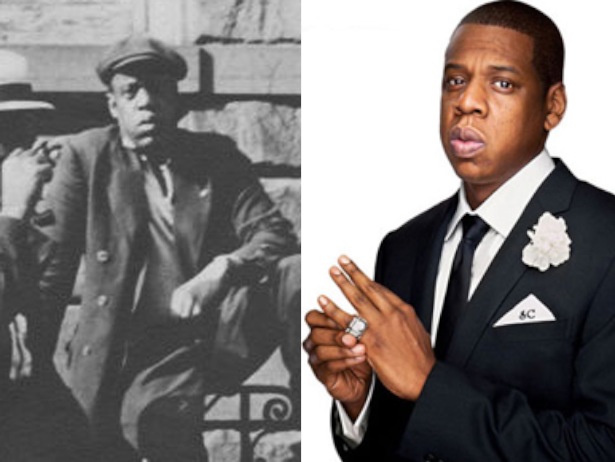
Theres more here going on that u may not be aware of.....
-
Yes I know ultra low frequency and so on.
-
Below is quoted from here http://www.linkungfu.com/redcloud.php
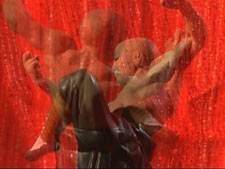
"A monk named Hung Yun Szu, or “Red Cloud,” was named boxing master of the Tien Shan Monastery.
The stories surrounding Red Cloud’s acceptance into the order, his rise to prominence, his subsequent departure and travels to learn, perfect and incorporate other forms from other fighting systems into his own, and his ultimate return to the T’ien Shan mountains to establish a monastery."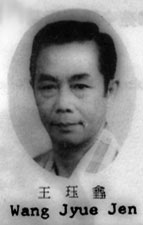
"Grandmaster Lin’s teacher, Wang, Jyue Jen was born in December of 1911, in the Hsi-Chuan Province of China. His father was a doctor of herbal medicine, and also a martial artist. Because Wang’s father was quite successful, the family lived well.
As a child, Wang was trained in martial art. Over the years, many teachers were hired to instruct him at home, privately.
By the early 1930’s, as civil war raged across China, the then 18 year old Wang joined Chiang Kai Shek’s forces. He became a Kung Fu instructor for the KMT, Chiang’s army for the Republic of China, and was assigned to teach at their Armor Force Headquarters. Coach Wang was so successful in his position, that he made the military his primary career.
When Chiang’s forces were defeated by Mao and fled to Taiwan in 1946, Wang went with them. He settled in Taichung, because that was where the Republic of China had set up its Armored Force base.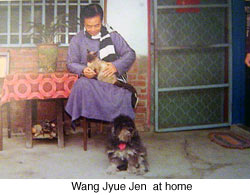 Wang bought a house in Taichung. During the day, he worked for the army. After hours, he taught martial art in the backyard of his home.
Wang bought a house in Taichung. During the day, he worked for the army. After hours, he taught martial art in the backyard of his home.
His backyard school, was called “Lei Sheng Wu Yuan”, or “Thunder Sound Martial Arts Garden.” It was not long before the reputation of both Wang and his school extended far beyond military circles.
Soon, the coach was being hired to go throughout the countryside to teach. First he taught privately, in young men’s homes. Later on, as more and more wanted to learn, he set up classes for group training, in the villages surrounding Taichung.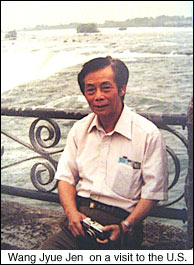
By the mid-1950’s, Wang had retired from the military, and was teaching his system, which he called “T’ien Shan Pai,” full time. He had many students, and taught in many locations, throughout Taiwan. Wang continued to teach, and to operate his school full time through the 1980’s.
Although Wang never actually told any of his instructors he was “yi ben” or the inheritor of the mantle of the “T’ien Shan Pai”, it was understood by both his students, as well as his instructors that he was. Once Willy Lin had become Wang’s assistant, and head instructor, Wang Jyue Jen made it clear to all of the members of his Lei Sheng (Thunder Sound) School, that Willy Lin was “yi ben”, also.
In his later years, Wang enjoyed traveling, and spending his time painting in the traditional Chinese manner. He died a natural death in 1990." -
Ive seen this before very interesting.
-
Does anyone have any stories they'd like to share about Jim? How he helped them, stories from everyday life.
Yes I do. I called Jim sometime back and we hit it off and we talked for hours. He told me a lot of interesting stuff. Of like how john was on a safari in Africa and a loin was traveling too close to the jeep and john hit it and killed it with his yin yang kung.
I liked Jim so I agreed to help him on his search. He was a good friend I called from time to time anytime I came across some info that he would like.
-
 1
1
-
-
Id like to say this.
Im not a student of Jim he was a good friend of mine. We would talk on the phone for hours.
Jim was not a bad guy.
What I see and what I don't like is there has been no condolences from the eastern mo pai students or Naziri.
Also what I don't like is no one who really had some ability healed Jim.
The thing that really sickens me about all of this is that the people who come here thinks this is just all a game.
Right now I got nothing for the mo pai. I mean how many bodies have to pile up before the honor of a school is lost?
The problem is people don't think deep enough.
Jim knew John for about 20yrs and John is an acupuncturist and still Jim died of health problems.
-
Video I made for Jim
-
Saw this today and it reminded me of how trying to hard can work against you.
http://www.youtube.com/watch?v=QWlJndr3BKE
-
 1
1
-
-
Im so angry sad and heart broken by all of this....
Jim,
I miss you man.

-
 3
3
-
-
I doubt either one of them would debate

Quite correct....
Being that the convo is happening on Kunlun shan Max Dorje would keep tha peace.
-
He's probably doing personal sessions with Tupac up on Kunlun Mountain
That's interesting id wonder who out of the 2 would win a philosophical debate....
-
I remember reading in the original Kunlun book it said that in level 2 that the merging of kan and li happens has anyone experienced that?
-
Who knows what he trained in


-
 1
1
-
-

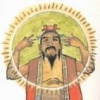
Jesus a fictional character?
in General Discussion
Posted
If your saying Jesus isn't real then anyone who was associated with him wasn't real either. To disprove one you must disprove the others.